Open Menu
Search

The rediscovery of original historic tiles inspired a colour-driven rethink, leading to three volumes to replace partitions in this 60sqm/645sqft apartment. Here, furniture becomes architectural structure rather than added objects.
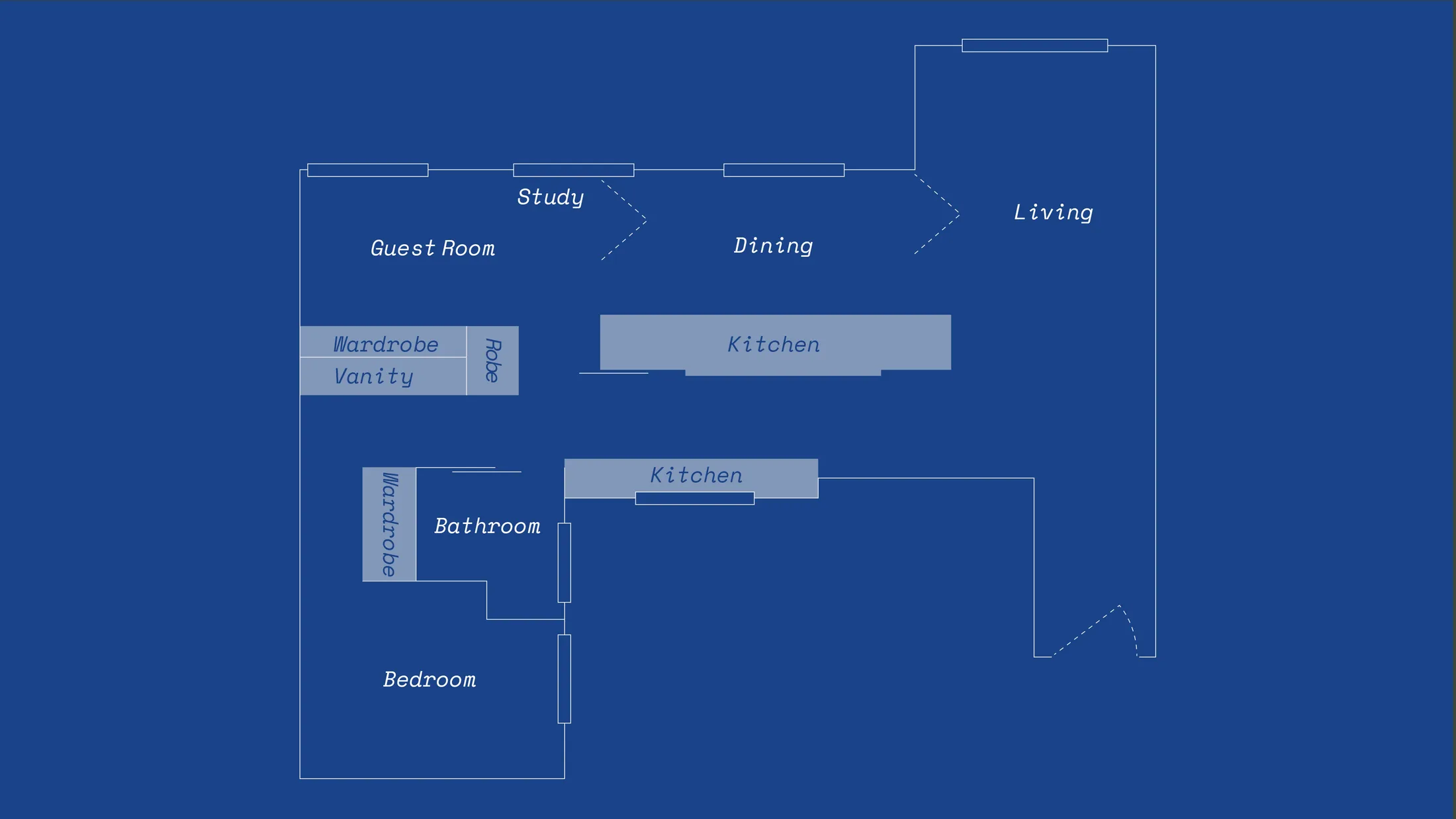
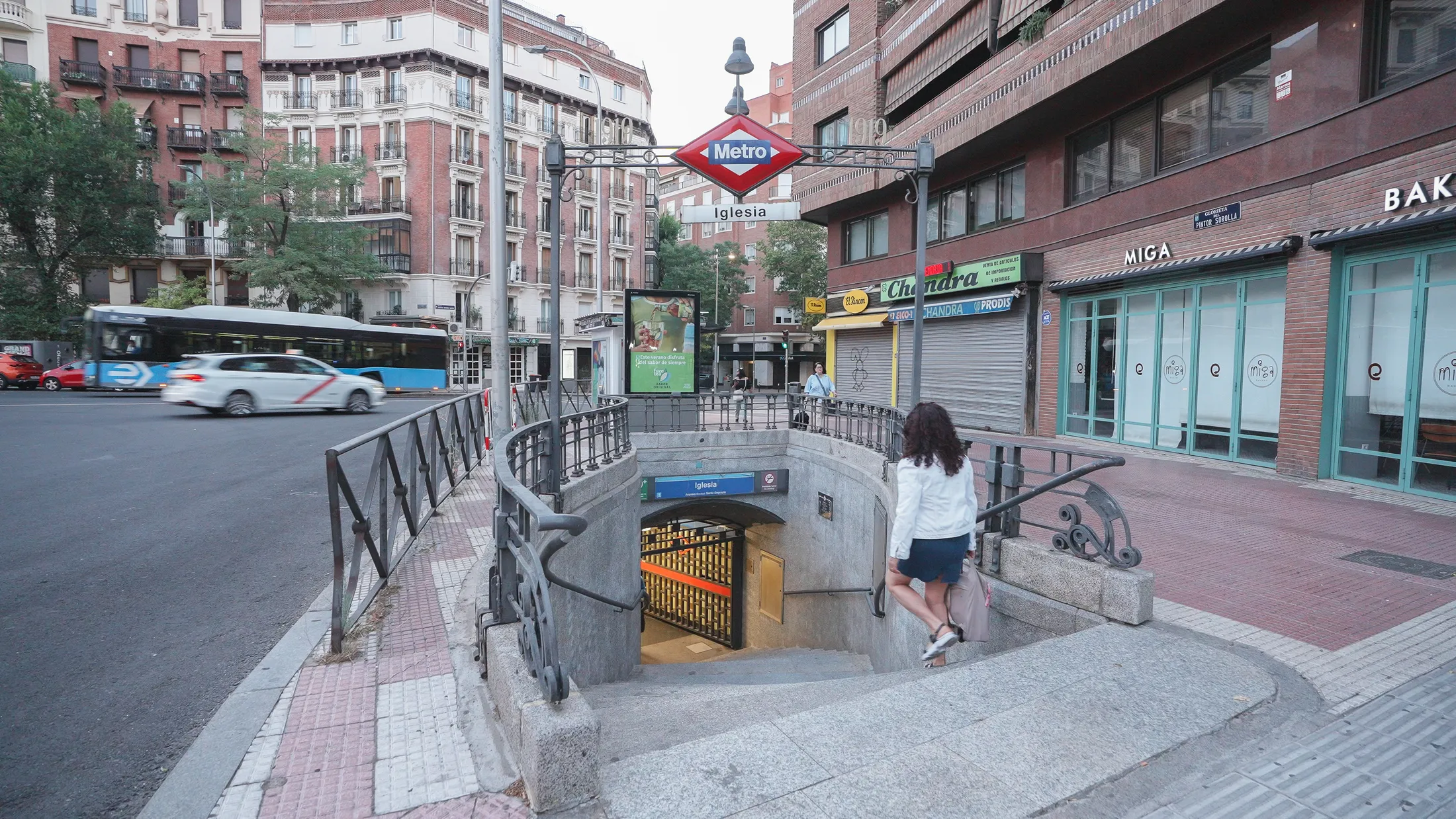
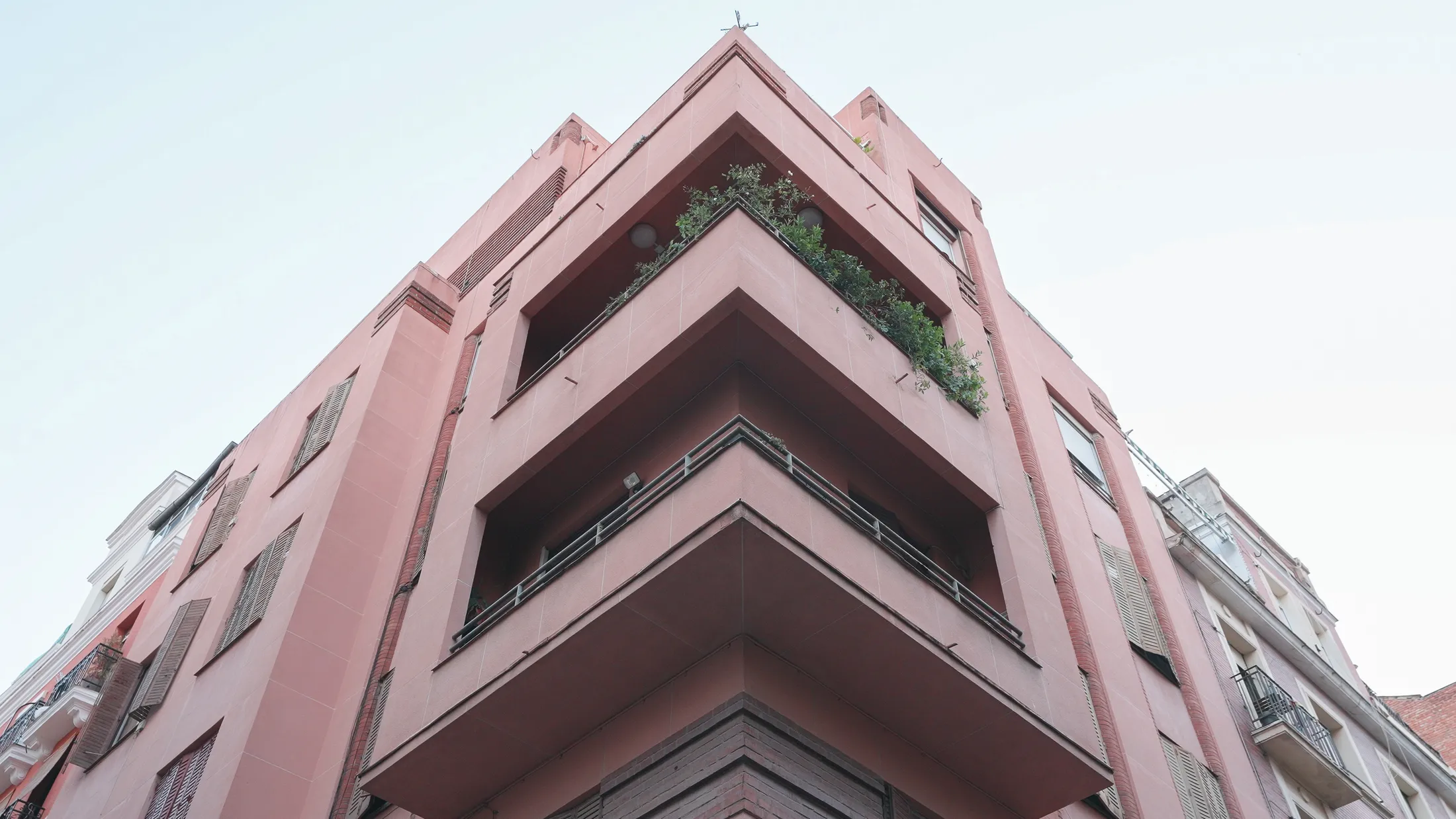
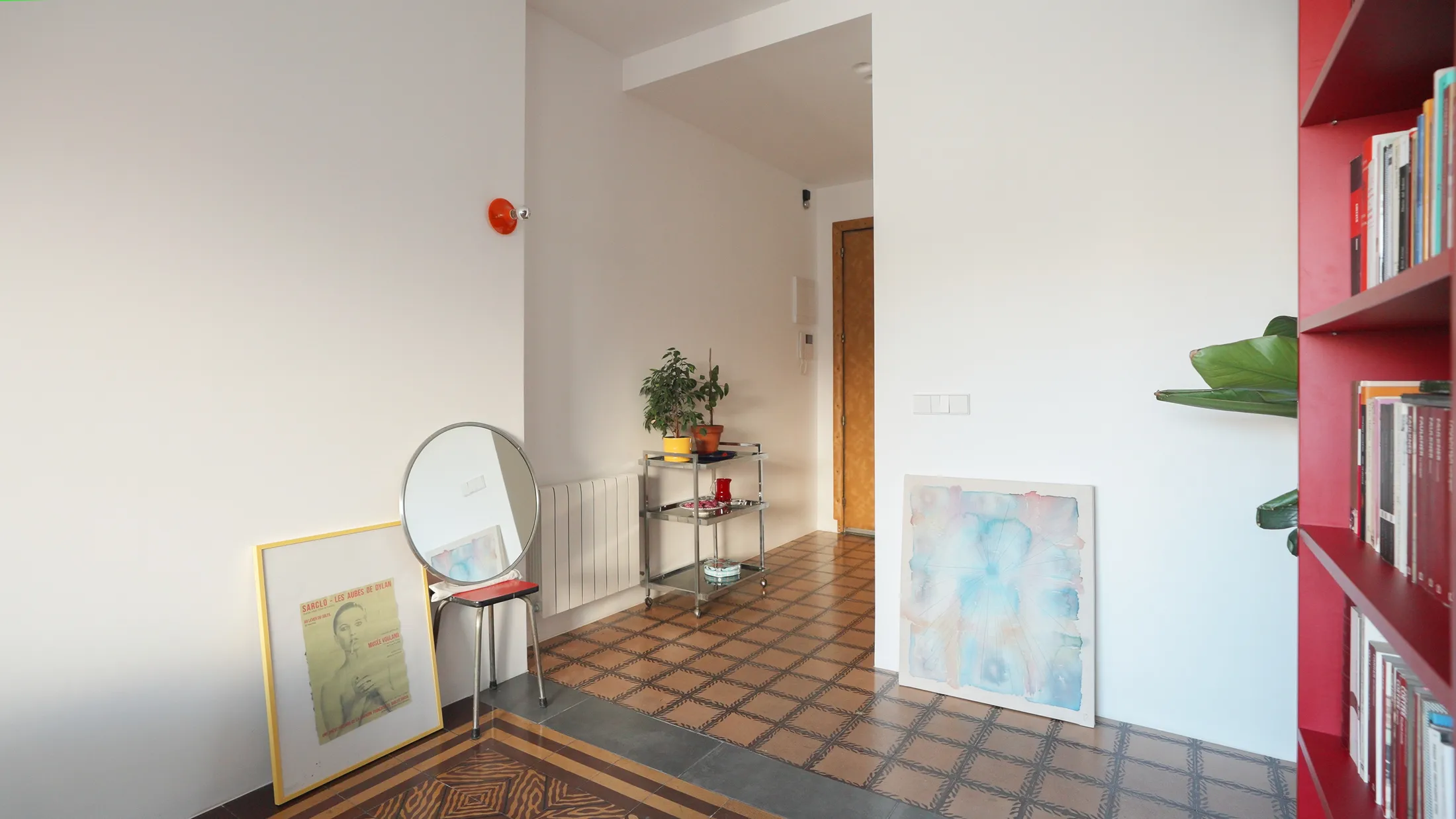
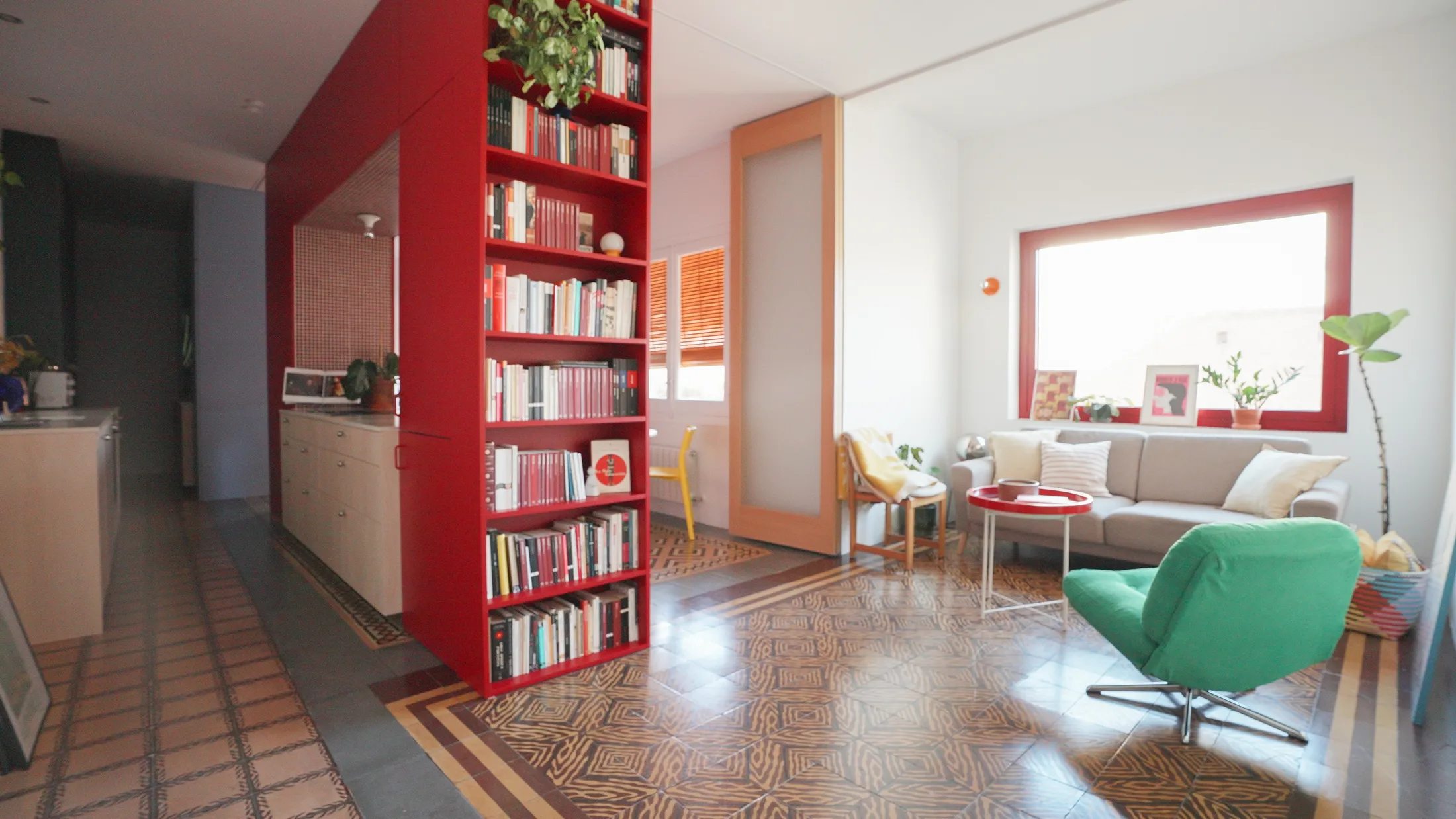
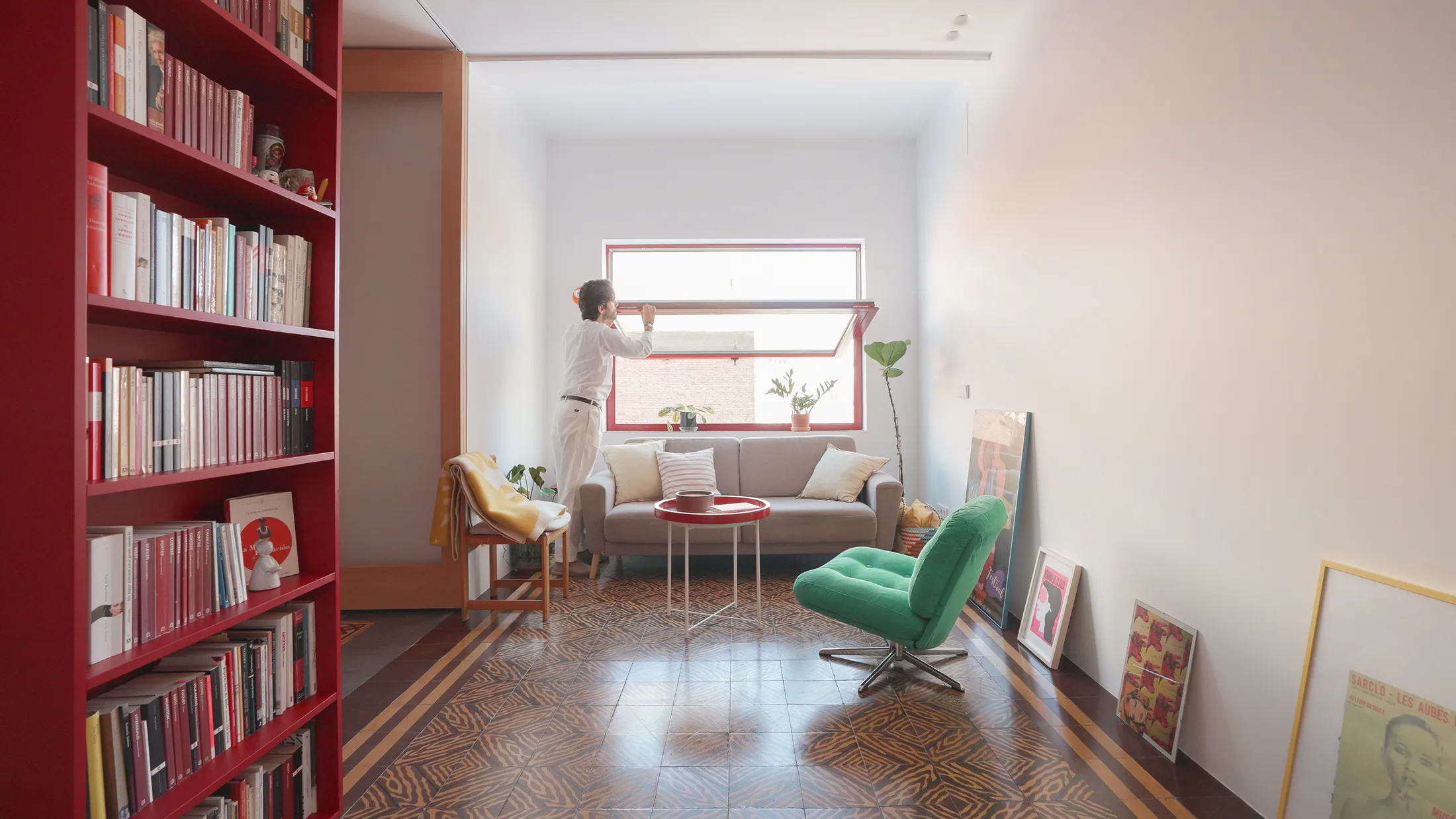
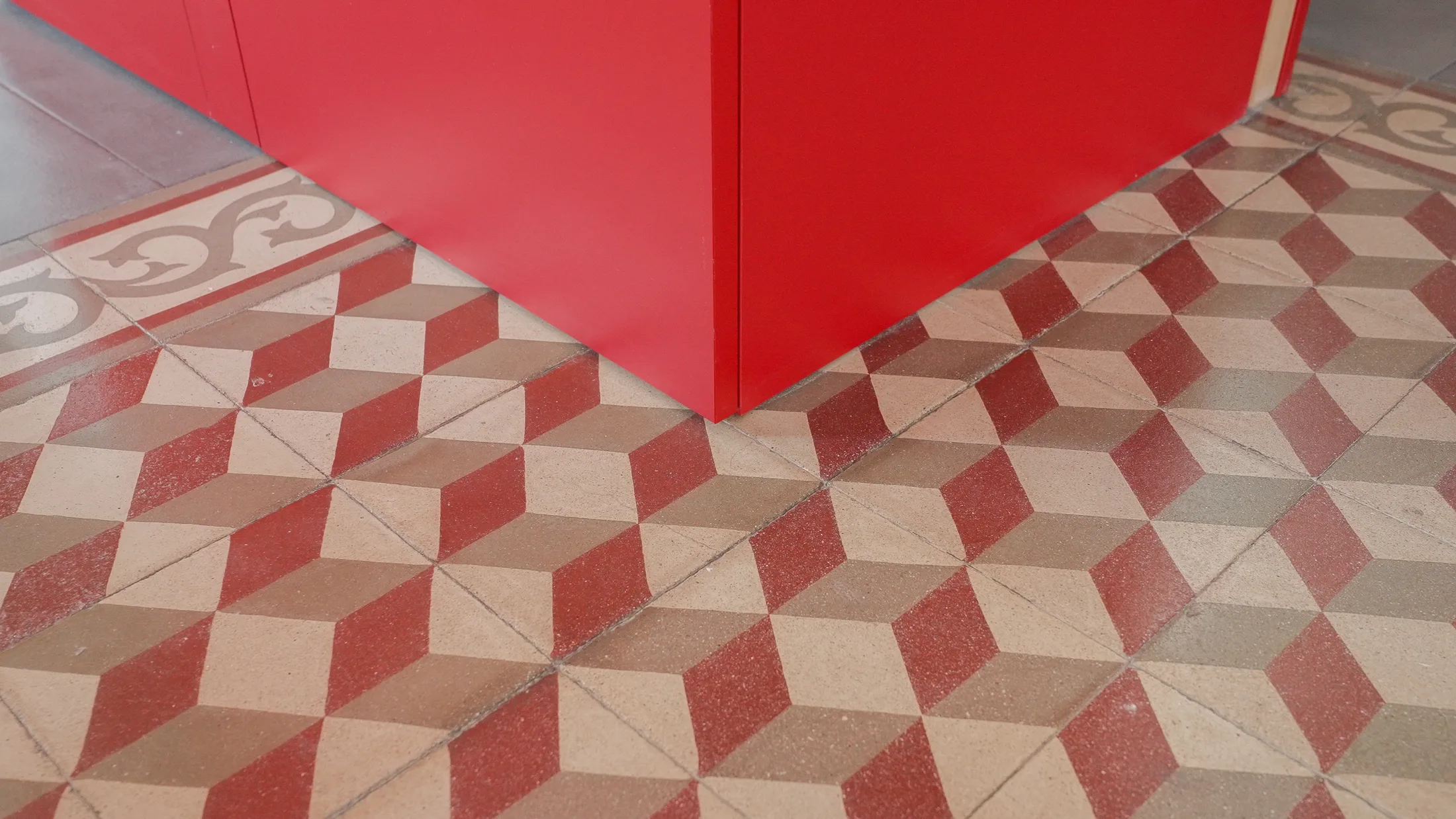
“These tiles are a big part of Madrid’s heritage, so we immediately wanted to keep them to honor the past.”
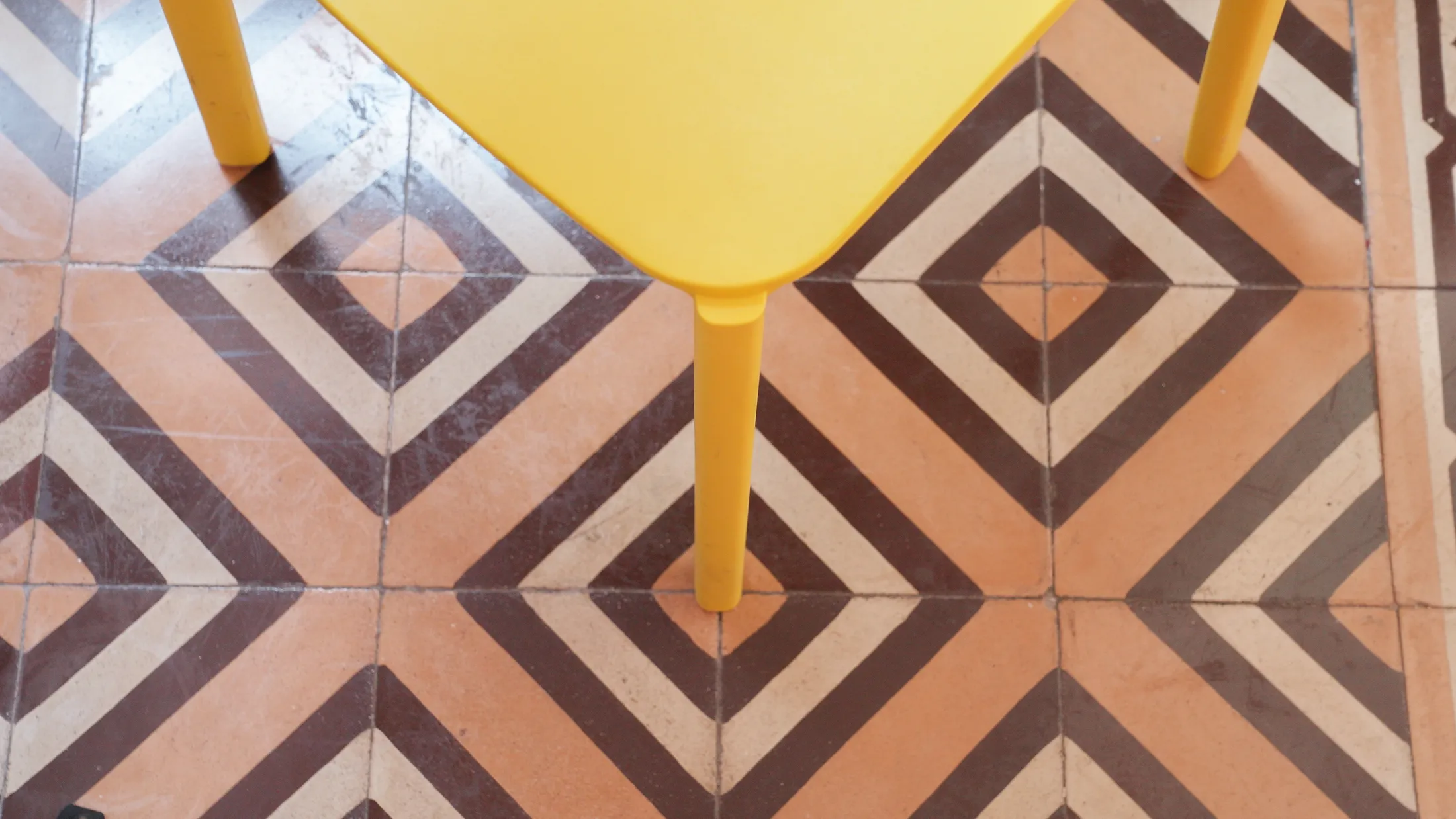
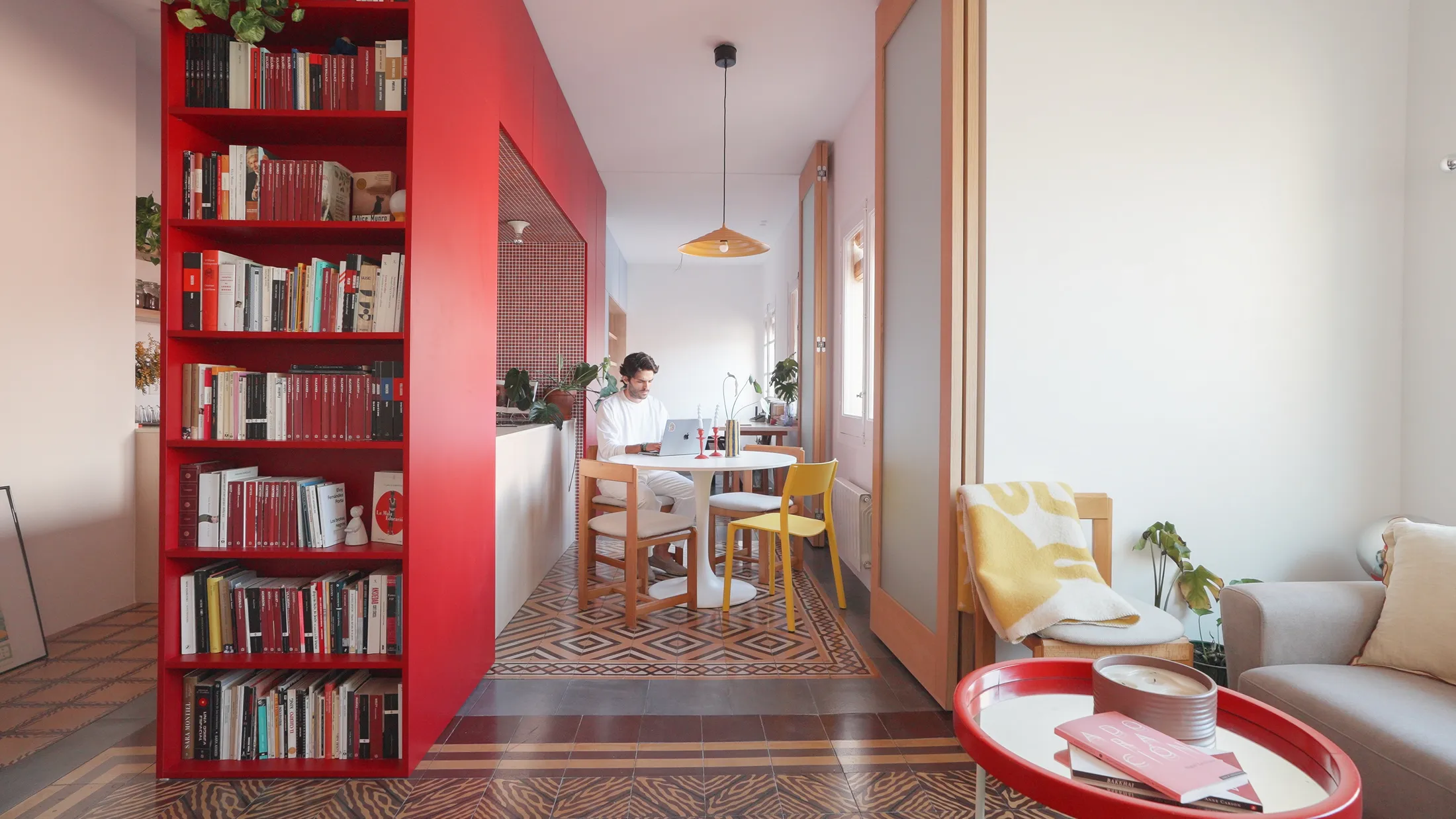

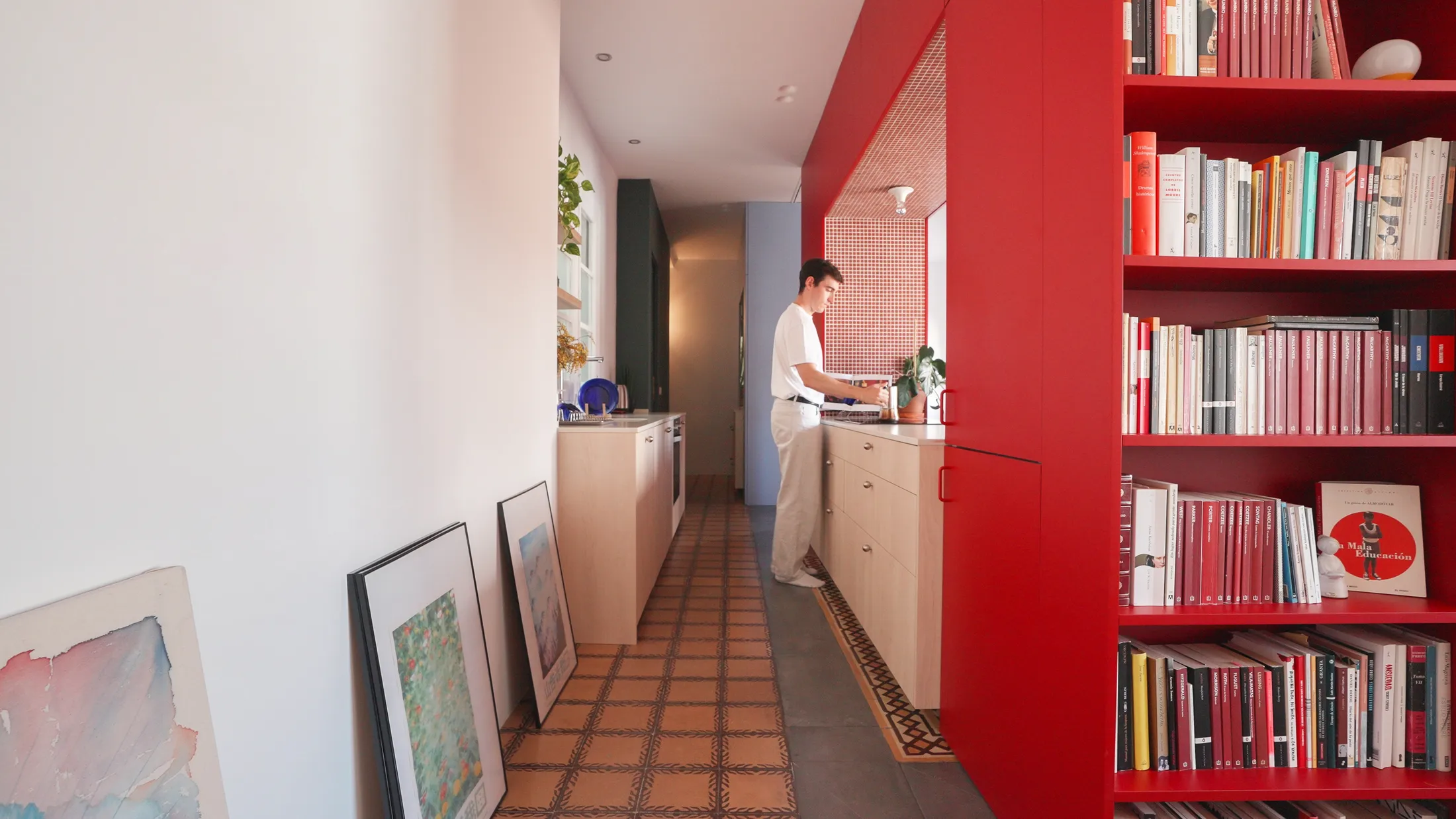
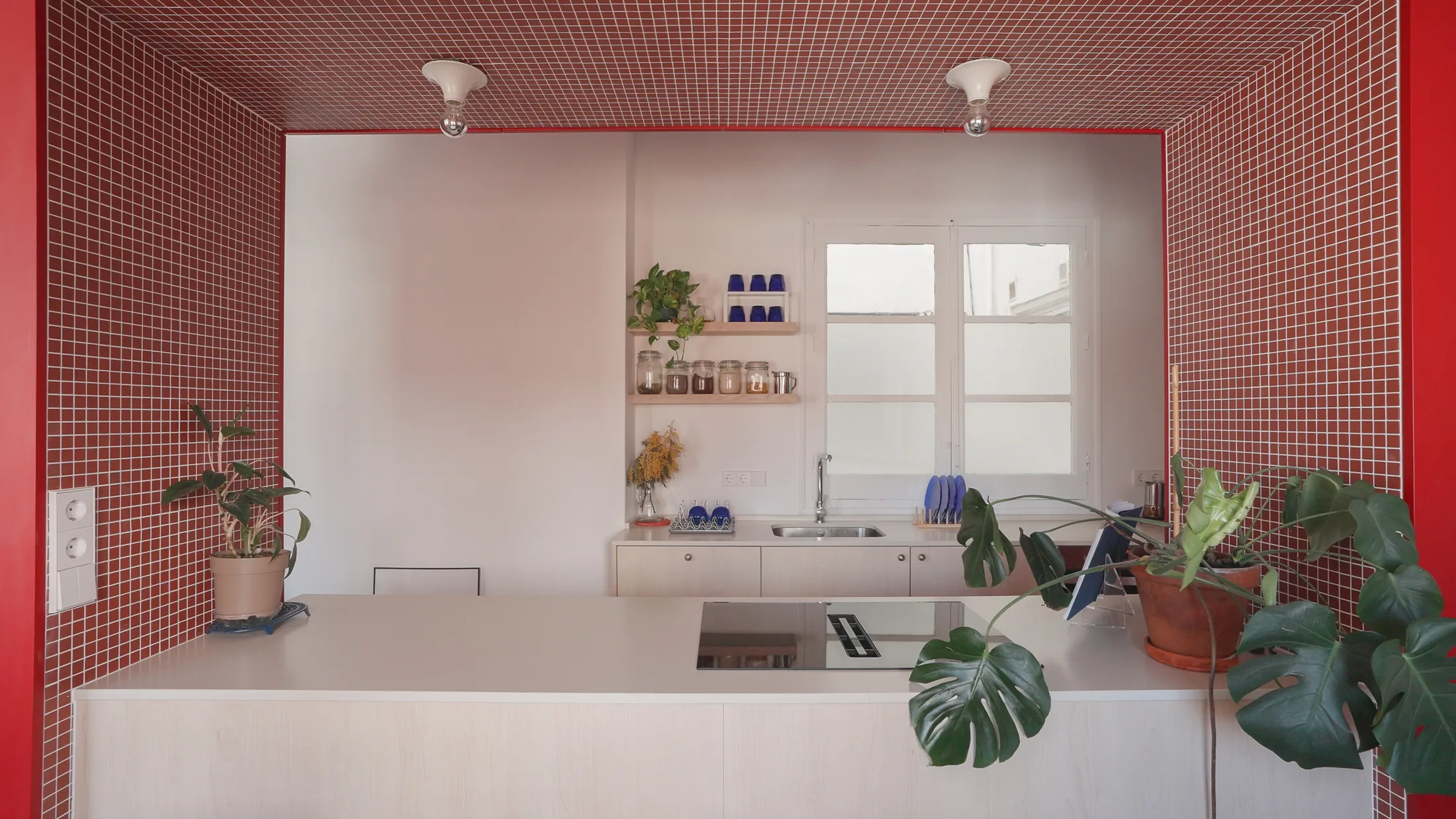

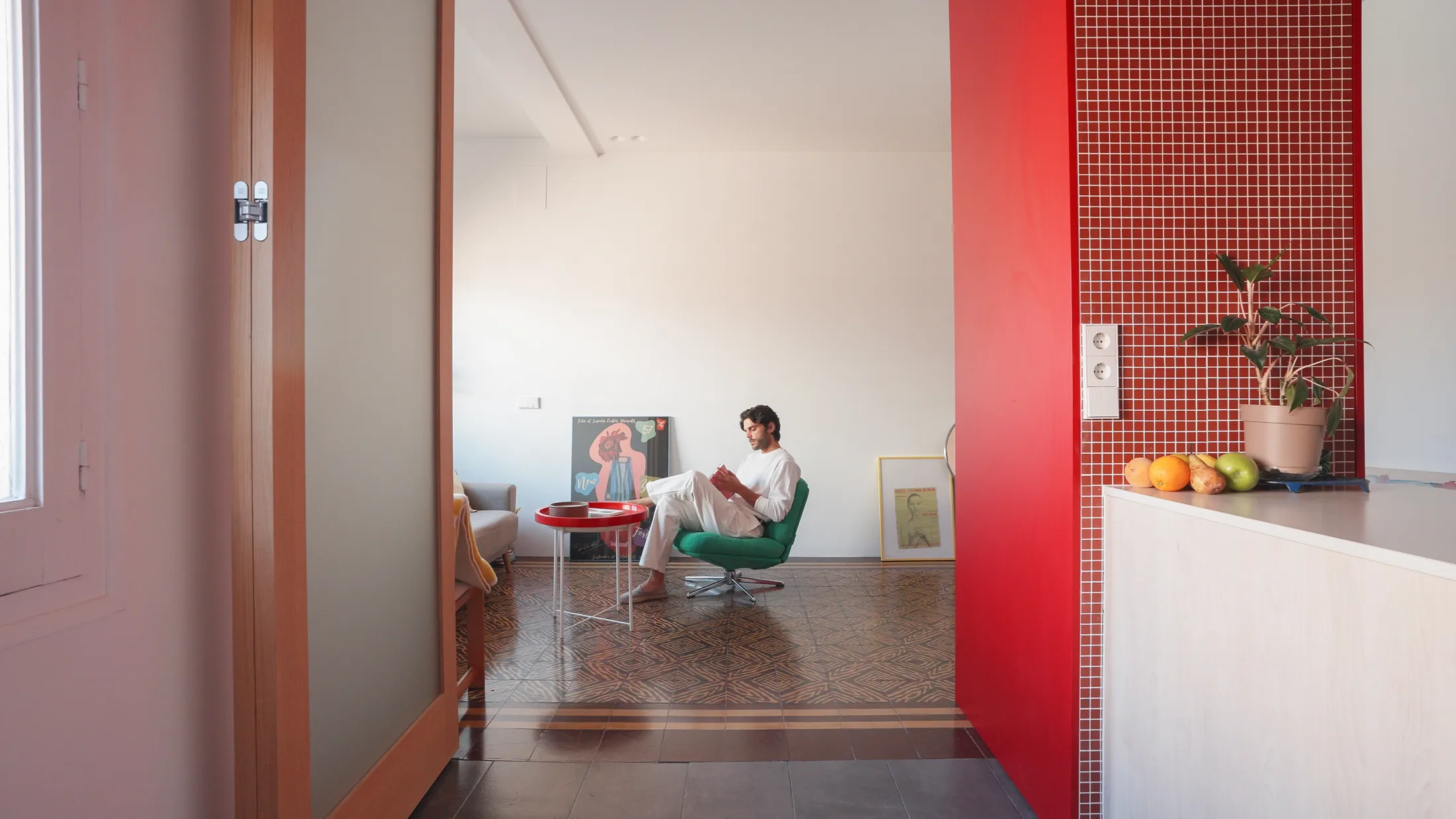
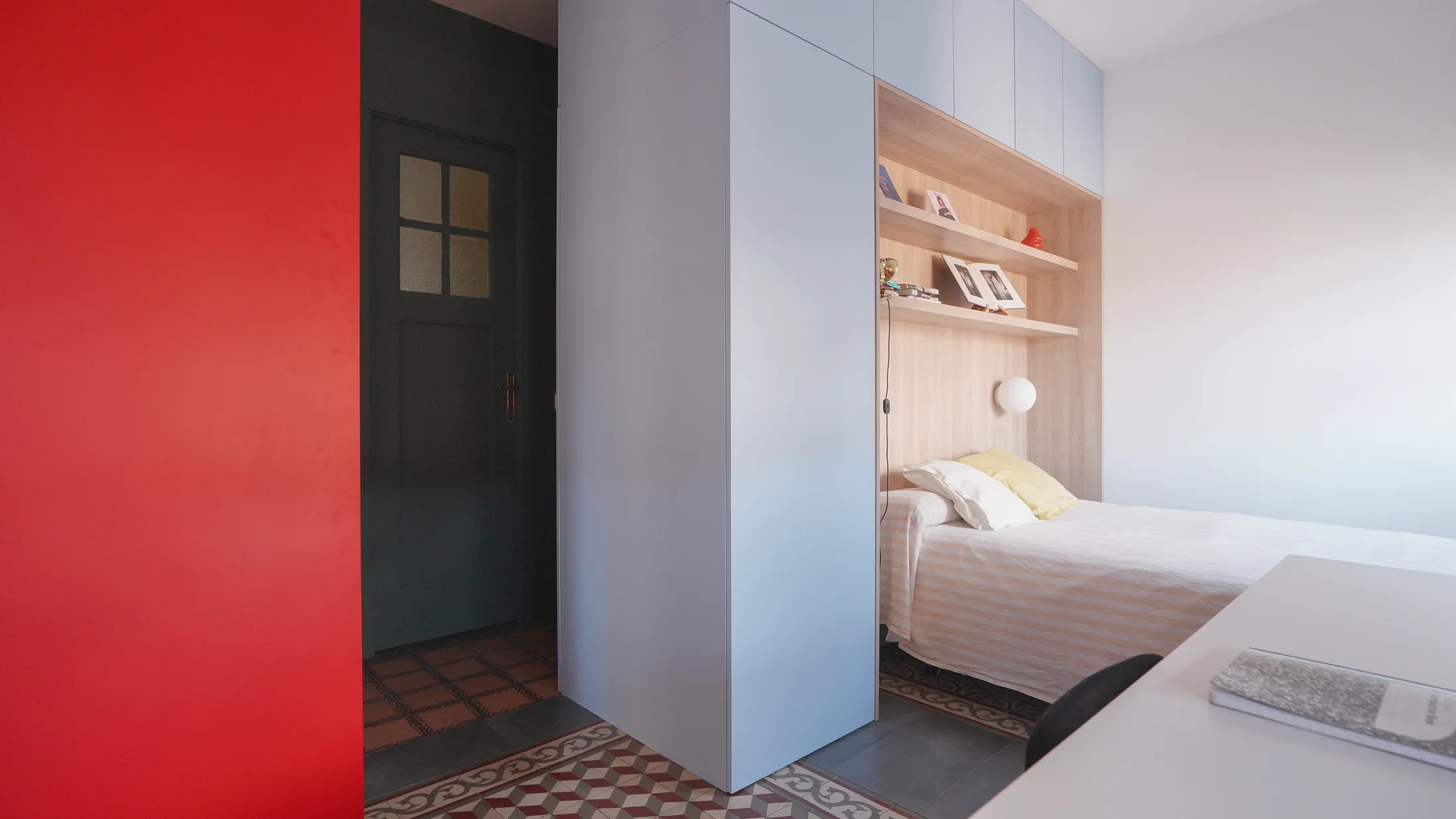
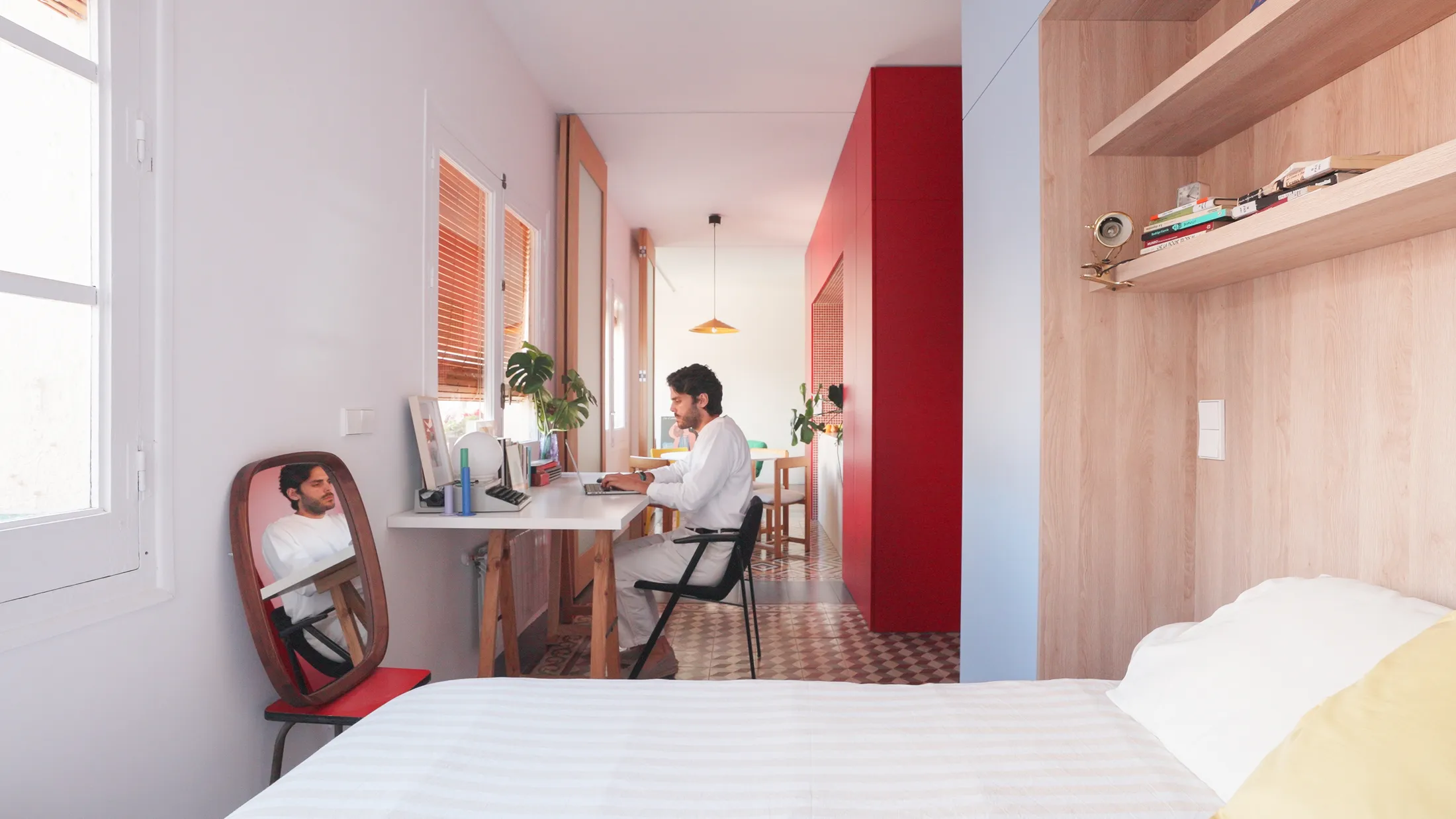
“This project is part of an ongoing series in our studio exploring the potential of what we call ‘equipped furniture’ as spatial organizers.”
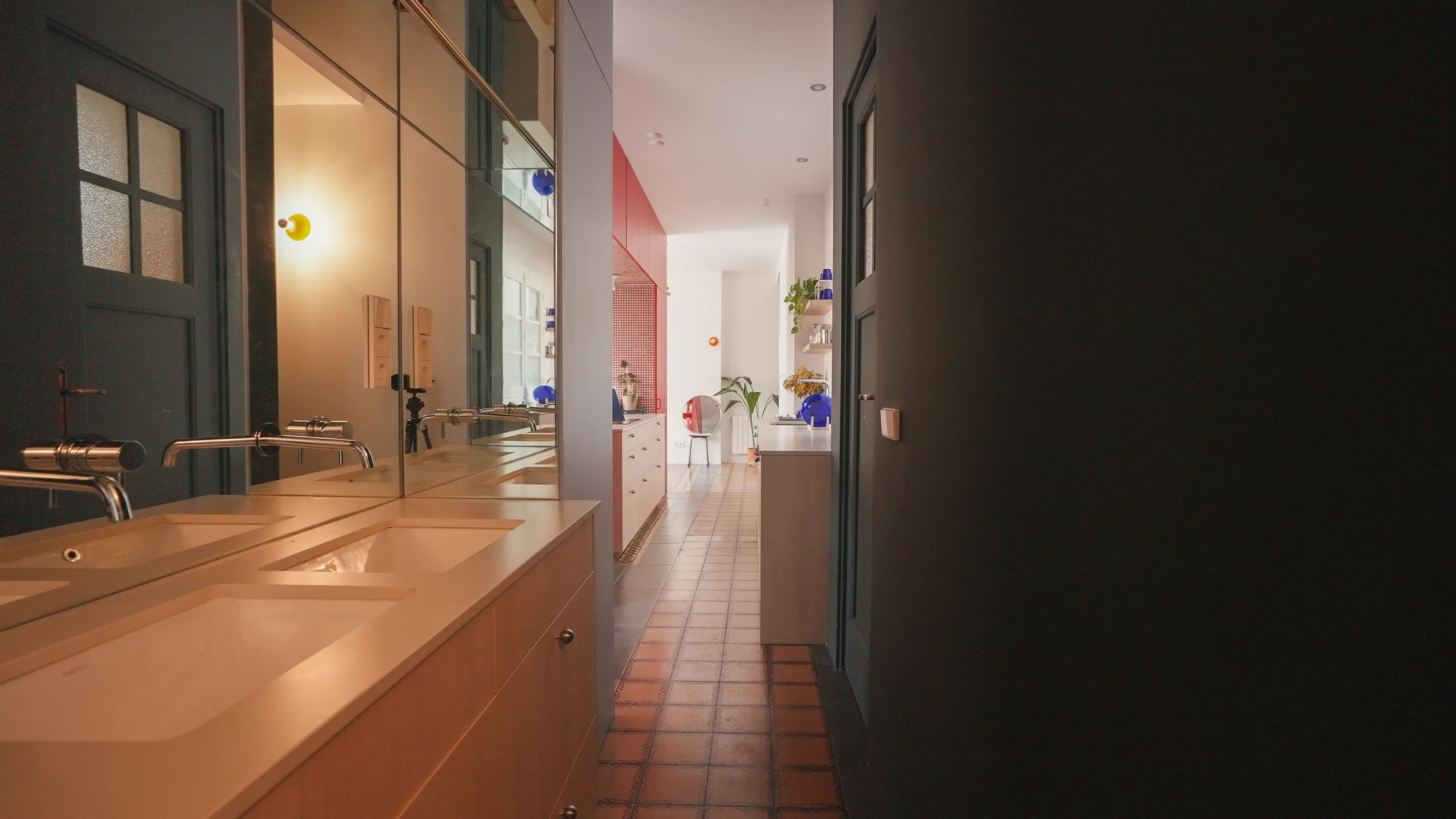

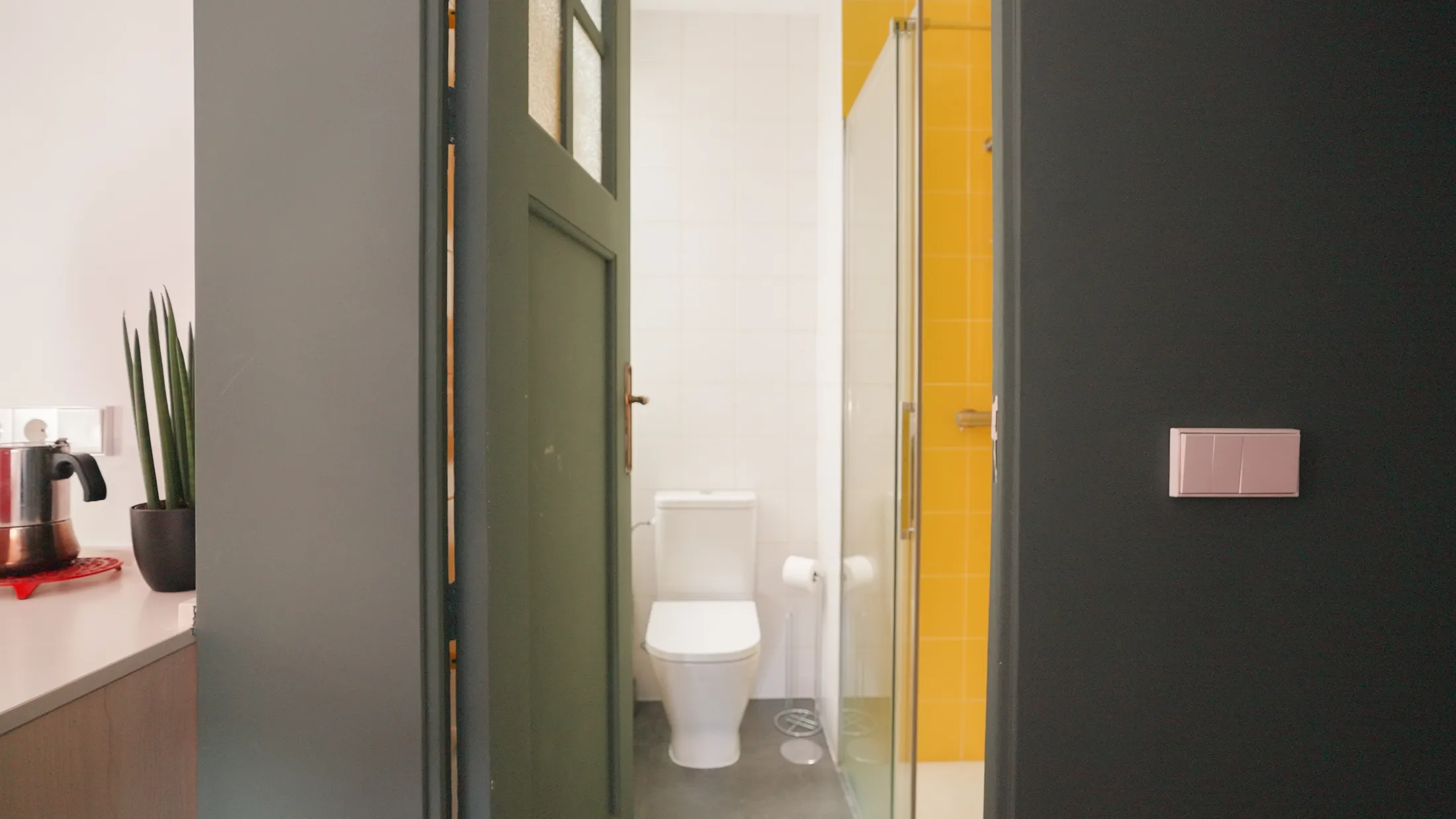
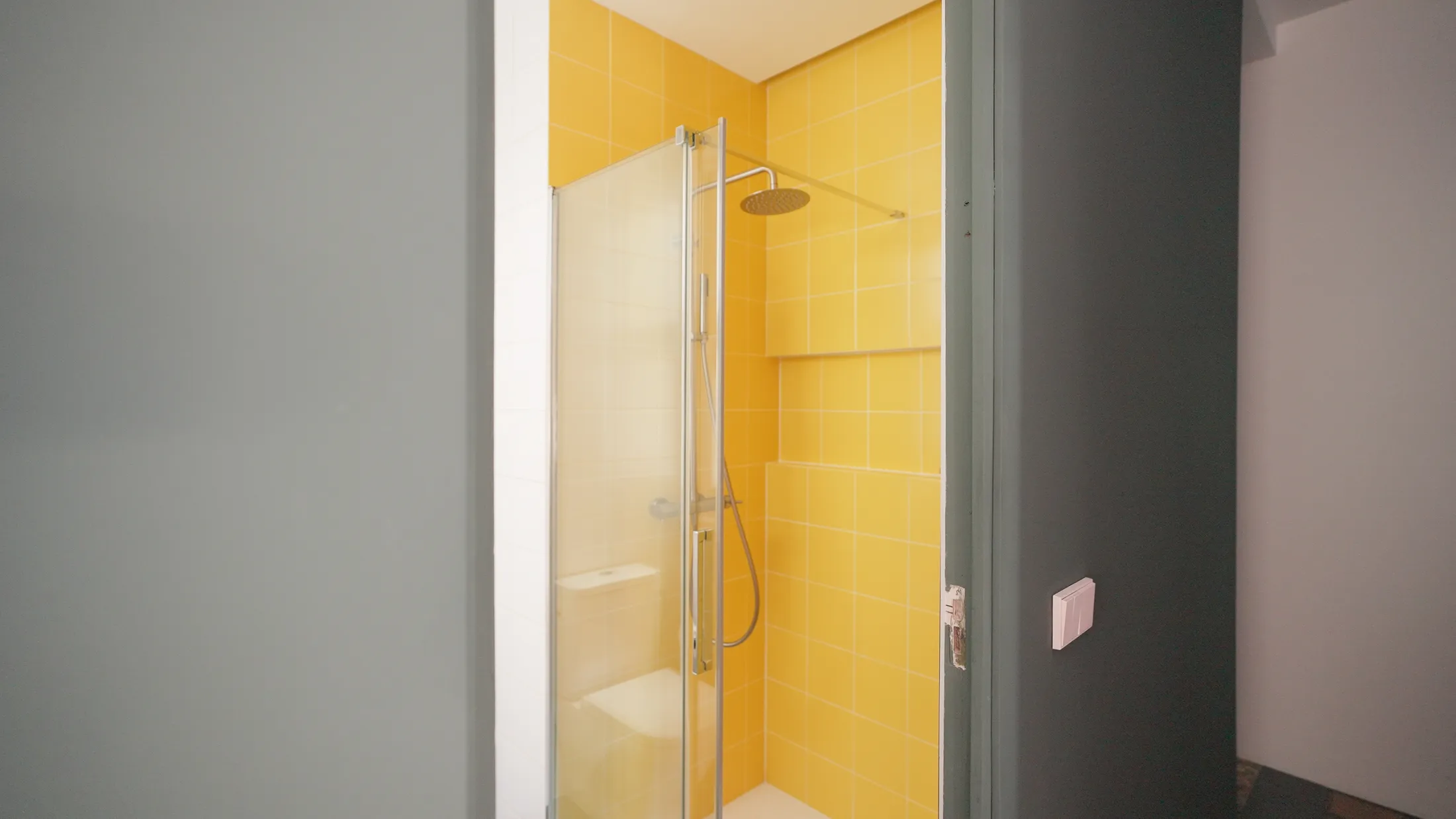
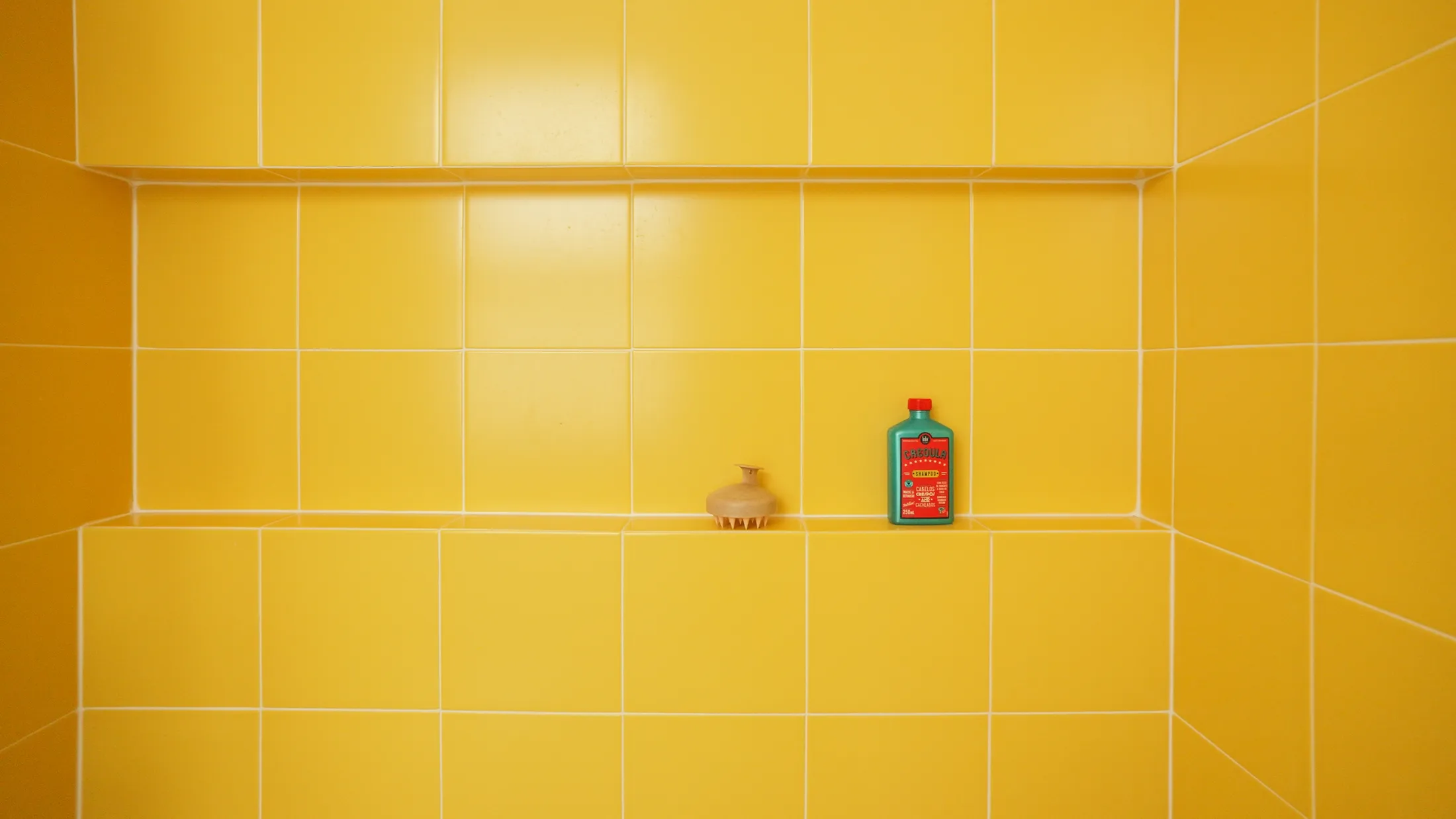
“These volumes are visible and usable from different rooms of the house. Each side has a different function that defines the space around it.”
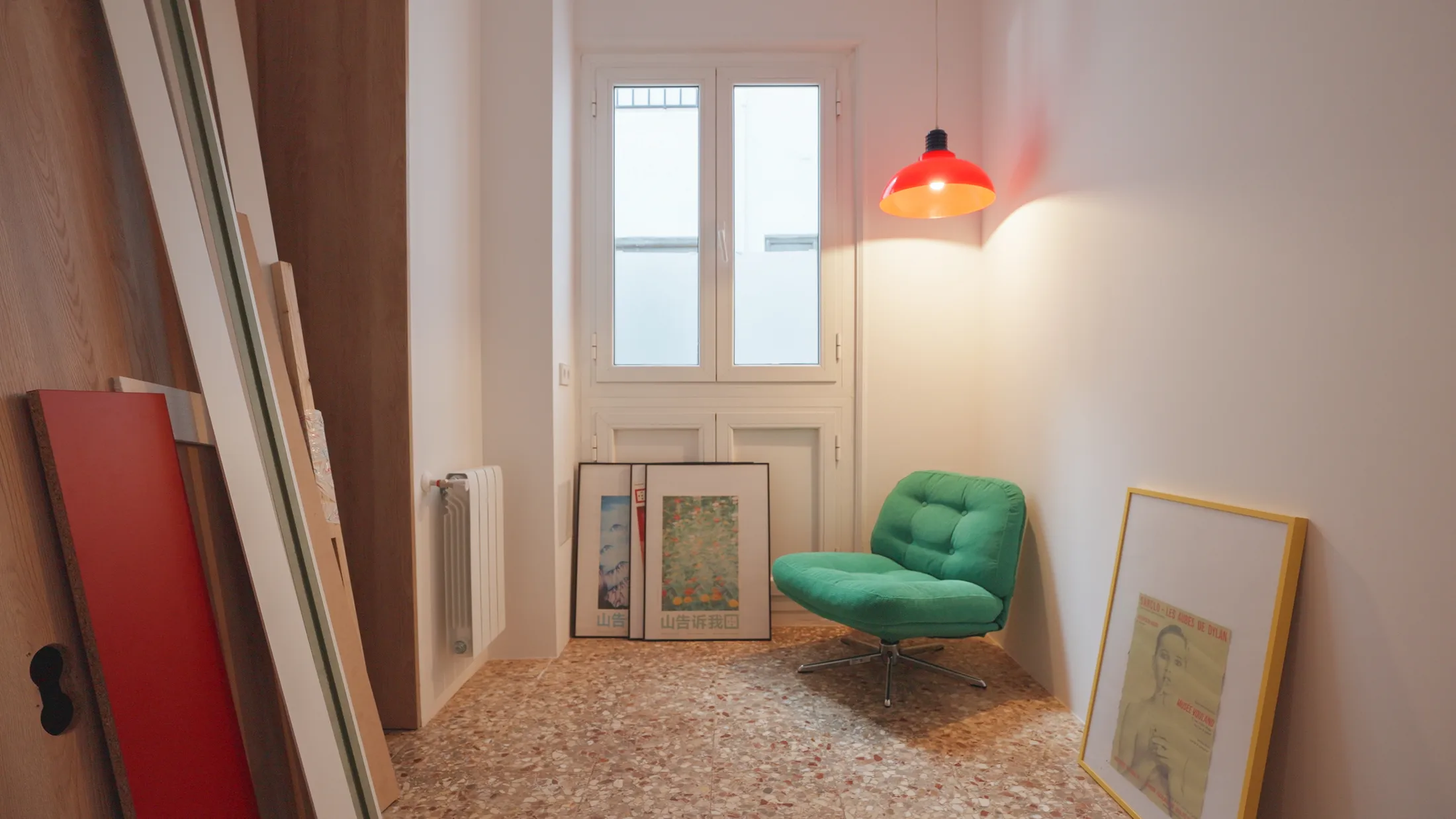
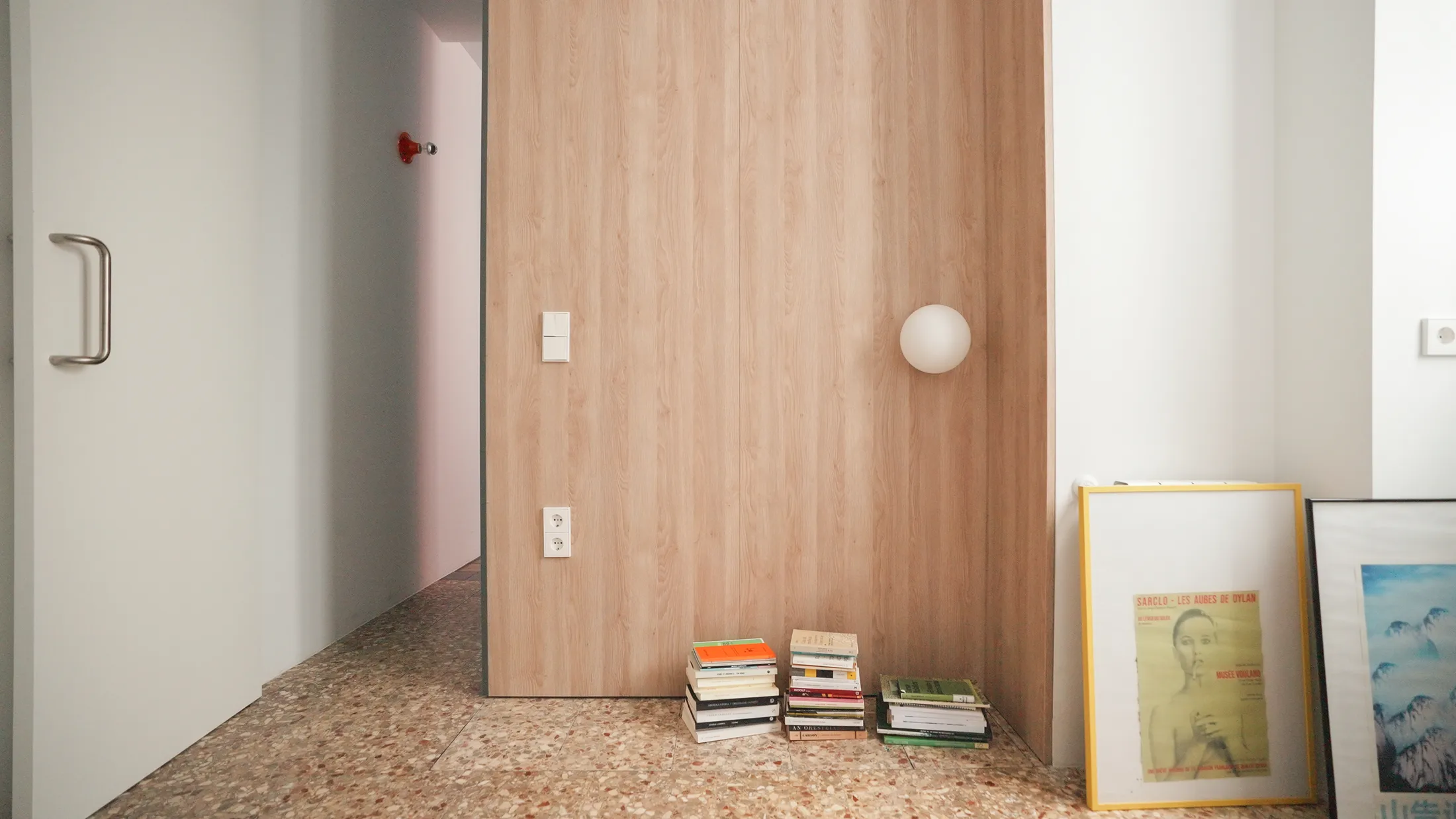

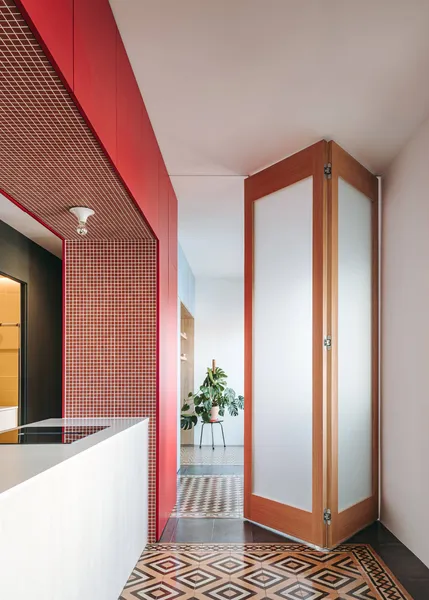
Javier Onrubia and Jorge Gabaldón’s work suggests that in compact homes, interior walls may no longer be necessary. “We’re interested in rethinking domestic space, not through traditional partitioning, but through large pieces of furniture that become architectural features,” say the architects and co-founders of JOTAJOTA+. It is a challenge to how the traditional idea of a room should be defined.
This principle is put into practice in Chromatic Home, a 60sqm/645sqft apartment in Madrid. Their brief for the apartment looked to the past as much as the future. The client wanted to introduce theatrical touches and bold design to the home without erasing its history. It needed to support solitude and creativity, yet remain adaptable for small gatherings. In a building from the 1930s, the home had seen only one renovation since the 1970s. Its layout followed a typical early 20th-century corridor plan, with a central hallway dividing small enclosed rooms for living, sleeping, and dining. The space was fragmented and inefficient, yet brimming with possibility.
The apartment has been in the client’s family for generations. “The client’s father had a faint memory from his childhood of a tiled floor in this place,” the architects explain. “Still, we didn’t really know what we would find beneath the vinyl and in what condition it would be.” When the flooring was removed, they uncovered the original hydraulic tiles, mostly unscathed, each room with its own colour and pattern. This became the foundation for the apartment’s design.
The architects began by removing all the interior walls, which left gaps in the floor that they filled with dark grey tiles of similar heritage to the hydraulic tiles. They then defined different zones in the home, not with brick and mortar, but through the placement of freestanding chromatic volumes – or, as the architects call it, “equipped furniture”, where furniture and architecture become one. Once again, the hydraulic tiles took centre stage. “They served as the apartment’s canvas,” the architects explain. “Each of the restored floors possessed a unique look, which inspired us to design each coloured volume with a distinct appearance and function.”
At the centre of the apartment sits a red volume. Housing the kitchen and connecting directly to the dining and living areas, it acts as a hub rather than a separate room. Finished in lacquered red on the outside and matte red mosaic tiles within, it hides the fridge and cooktop, allowing the kitchen to function as a sculptural piece of furniture as much as a workspace. As Gabaldón reflects, “The kitchen is the heart of the house. It is central to the client’s lifestyle, and he wanted it to be the main event of his home as well.”
The blue volume brings versatility to the apartment, offering a multipurpose space that shifts with the client’s needs. It can serve as a study, reading area, or guest bedroom, closing off with frosted-glass sliding partitions when privacy is required. Built-in storage is integrated throughout, including a niche for a future sofa bed. At the back of the volume is a semi-separate area for the bathroom sinks, independent from the bathroom. This arrangement reflects the architects’ belief that everyday tasks like brushing your teeth or getting ready don’t always require full privacy.
Last but not least, the green volume serves as a threshold between the home’s social areas and its most private spaces. “At the far end, in the most private corner of the apartment, we placed the green volume that houses the client’s closet, laundry area, bathroom, and bedroom,” Gabaldón explains. The bedroom is currently used as a storage space while the client awaits some furniture – a reminder that true homes take time. The original bathroom door was kept and painted green to merge into the volume, with its bronze handle, crafted years ago by the client’s grandfather, preserved as a sentimental detail. Behind this volume, a yellow-tiled shower capsule radiates a contrasting burst of colour.
“We understand small dwellings offer a unique chance to test new spatial strategies and respond more flexibly to the evolving needs of how we live and work today,” say the architects. At its heart, Chromatic Home is a story of inheritance reshaped with fresh thinking. By treating furniture as the architecture of the home, the designers carved out space for solitude and connection. Their approach suggests a future where the smallest homes can be the most inventive.